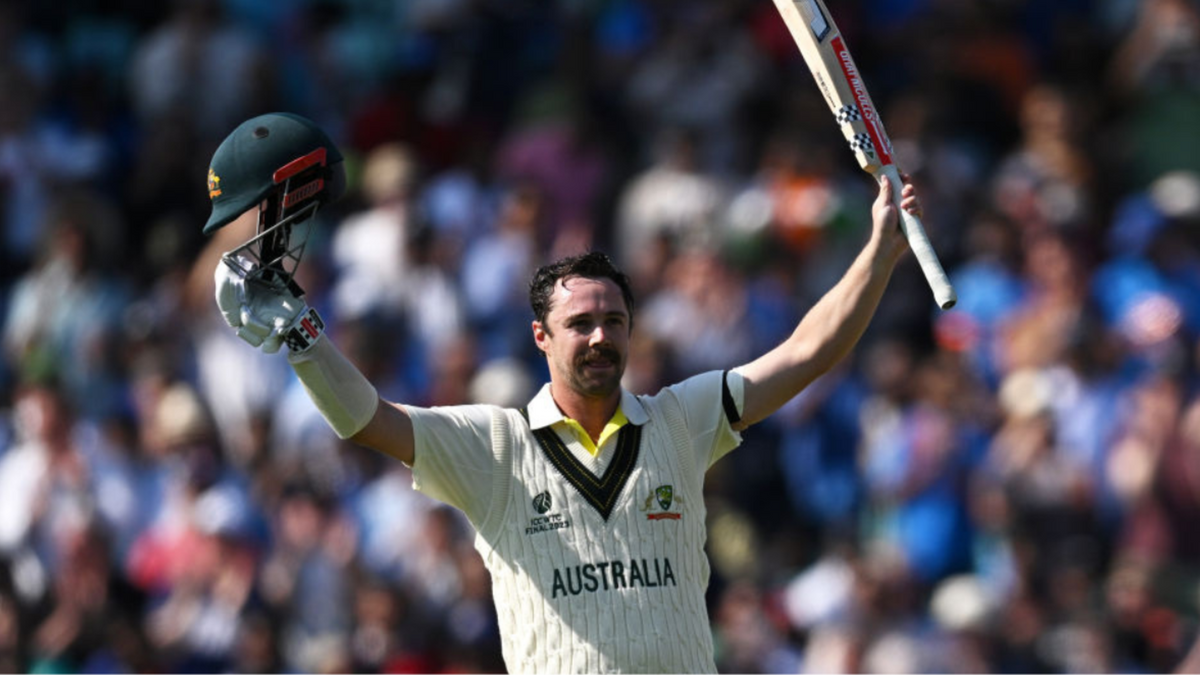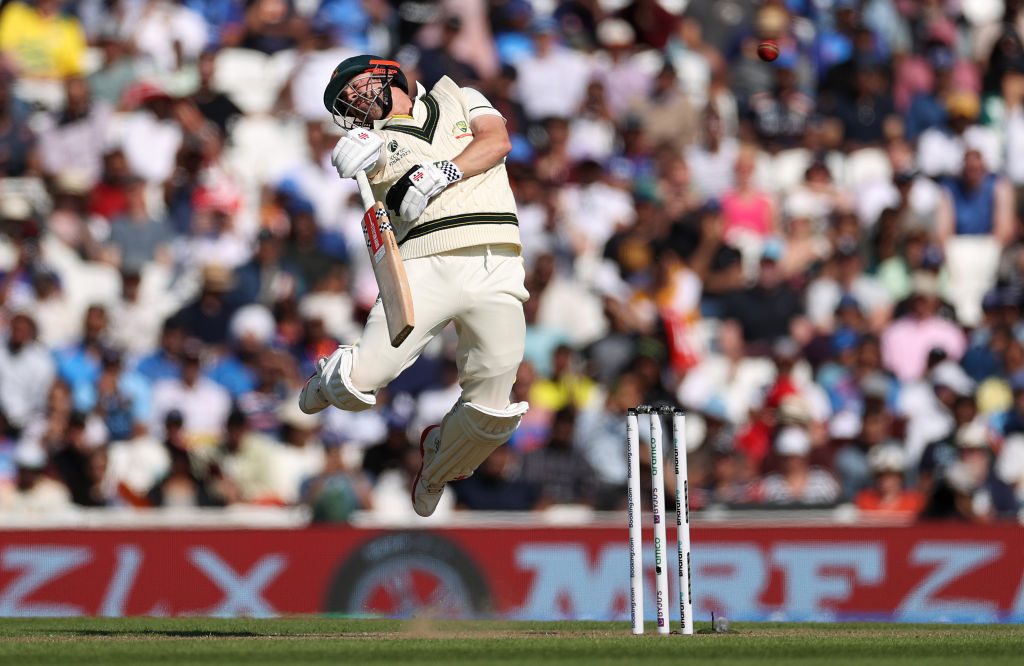
No.1 in Wisden’s men’s Test knocks of 2023 is Travis Head‘s epic 163 that set up a maiden World Test Championship title for Australia. Naman Agarwal recalls the nonchalance with which Head countered the occasion to come up with a performance for the ages.
Subscribe to the Wisden Cricket YouTube channel for post-match analysis, player interviews, and much more.
Wisden’s men’s Test innings of 2023, No.1: Travis Head – 163
India v Australia
World Test Championship final 2023
The Oval, London, June 7-11
When Travis Head was dropped from the playing XI for the 2021 Sydney Test against India, something had to give in his career.
Head’s Test batting average had dropped from 51 eleven matches back to below 40. In the two Tests of the series which he played, Head had managed 62 runs at 20.67. The Indian bowlers had worked his technique over, restricting his scoring options as was reflected in his strike rate of 39.24. There was something amiss in his game, which he needed to figure out.
Over the next few months, he did just that.
With the help of former Australia coaches Justin Langer and Tim Nielsen, Head went back to the drawing board and made some technical changes. He opened up his backlift from over middle stump to a more conventional one pointing towards first slip and allowed his bottom hand to take a bit more control than it had, opening up more scoring options either side of the wicket. It unlocked the beast that was hiding within.
In the three Tests he played in 2021 after making a comeback, Head averaged 62 and struck at 86. In the 10 Tests he played the next year, he averaged 50 and struck at 80. If that wasn’t good enough, he even adopted to a new role at the top of the order in India in 2023 and averaged 47 from three Tests. The prodigious talent that he always possessed, was coming to the fore.
As Australia geared up for the World Test Championship final, Head had played a massive part in getting them there. From 17 Tests in the cycle before the final, he had amassed 1,208 runs at 52, striking at 80 with six fifties and three hundreds. But the new version of Head, was a man possessed. Bringing his team to the final was not going to be enough for him. Head was going to take them across the finish line.
On an overcast morning in London, India made the bold move of electing to field first. When Mohammed Siraj removed Usman Khawaja for a duck early on, it seemed to vindicate their decision. Two more wickets fell either side of lunch as Australia were reduced to 76-3, bringing Head to the crease.
If ever there had been doubts regarding how he would approach the occasion, it took all of ten balls for Head to clear them. Two pushes through the off side off the back foot, and a flick off the pads for boundaries saw him race off to 13 off 10. The next set of 10 balls fetched three more boundaries as the scoreboard showed 28 (20)* next to his name. The momentum which India thought they were gathering half an hour back had been snatched away from them before they had realised.
After the initial flurry, Head settled into a stable rhythm as the Indian bowlers tightened their lines and lengths. Whenever they would err, he would not let a single opportunity go. He brought up his fifty off 60 balls with another one of his trademark backfoot punches through the off side.
[caption id=”attachment_603927″ align=”alignnone” width=”1024″] Travis Head rode his luck with short balls in his nineties during the WTC final. (Photo by Ryan Pierse/Getty Images)[/caption]
Travis Head rode his luck with short balls in his nineties during the WTC final. (Photo by Ryan Pierse/Getty Images)[/caption]
With Steve Smith’s solidity for company at the other end, Head had the license to keep playing his shots. Cuts, flicks, on-the-rise drives – on a wicket where the ball was coming onto the bat, he made India seriously question their decision of bowling first mid-way through the evening session.
By the time the Indian seamers adopted the short ball strategy, a documented weakness in Head’s game, he had crossed 80 and had already dealt the killer blow. Perhaps this is what is meant by “make your own luck”. Head’s stunning counter-attack had left the Indian side scrambling for ideas, resulting in a fatal delay in targeting his weakness. A four and a six off consecutive upper-cuts took him from 81 to 91 before he hopped around, fended, and played and missed several short deliveries in his nineties. They were good balls, but not good enough to get him out.
A top-edged pull took him to his hundred, his sixth in Test cricket and fourth since comeback. Head mounted the misery further on India, ending day one at 146. Australia ended at 327-3.
One of the factors which makes Test cricket what it is, is the time and opportunity it provides for players and teams to come back from dire situations. However, if ever there was any first day performance which all but sealed the fate of a Test match, it was this.
Winning the toss and electing to field first due to a combination of overhead and pitch conditions, India would have hoped to restrict Australia to somewhere around 250 after having them three down for 76. Head (along with Smith) ensured that Australia ended up with nearly double of that (469).
Grabbing the game by the scruff of the neck and turning it around by counter-attacking has been the hallmark of Head 2.0. The slowest Test hundred he has scored since his comeback has been at a strike rate of 79.9. The nonchalance and effortlessness with which he pulled it off at the biggest of stages, though, stamped his authority as one of the (often underrated) modern masters of the game.
India fought, but in vain, falling 209 runs short. Australia registered their maiden World Test Championship title. And after being at crossroads two and a half years back following the Sydney snub, Head’s Test career completed a full circle.








